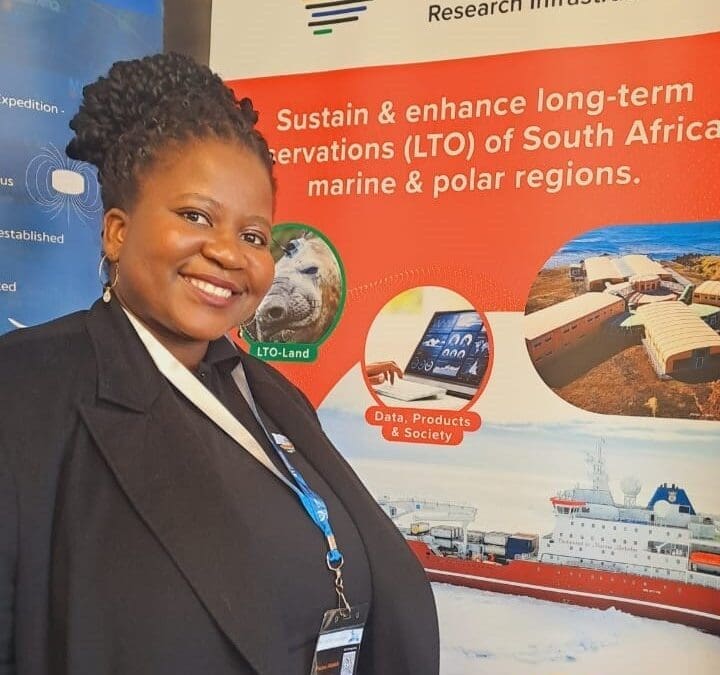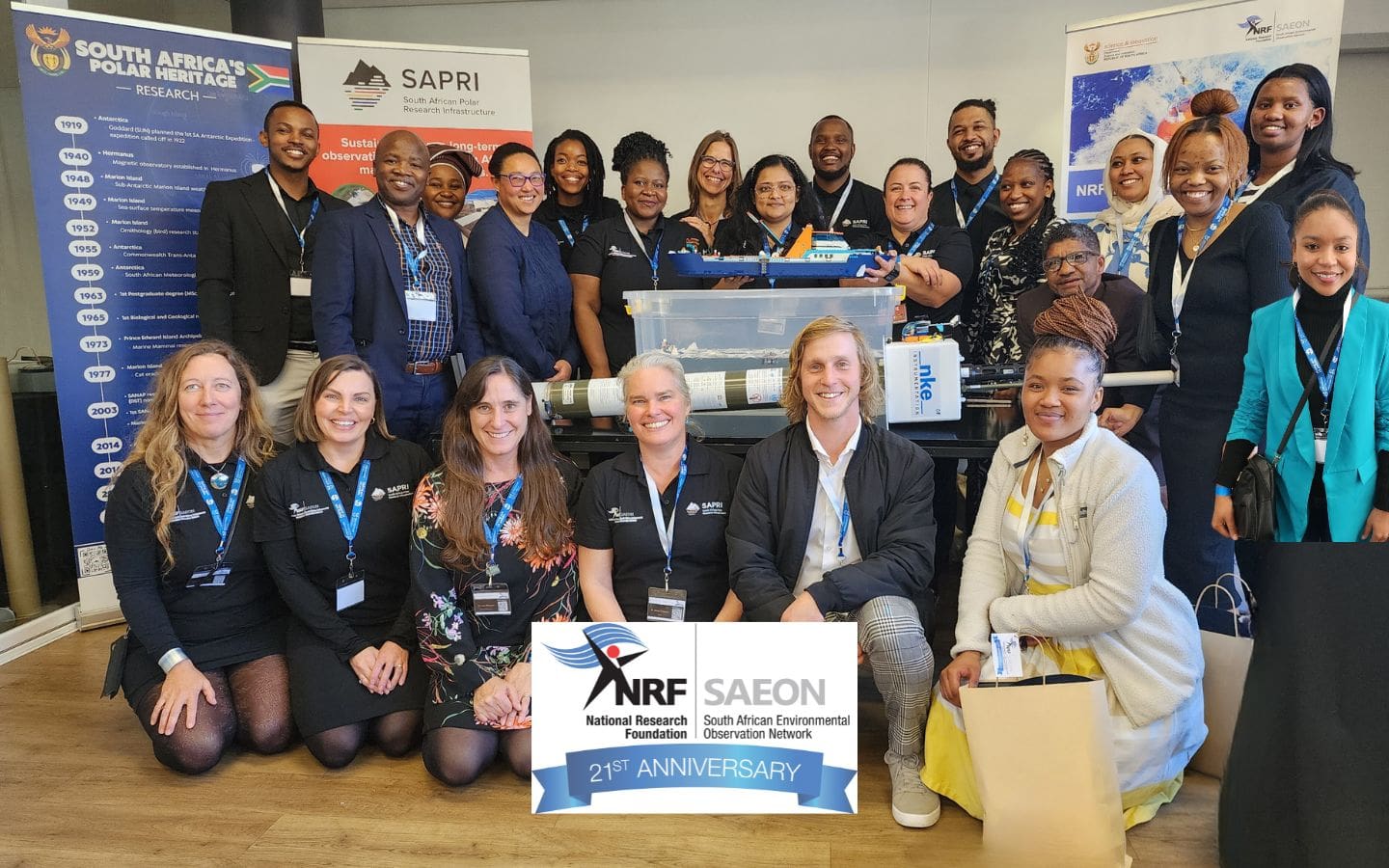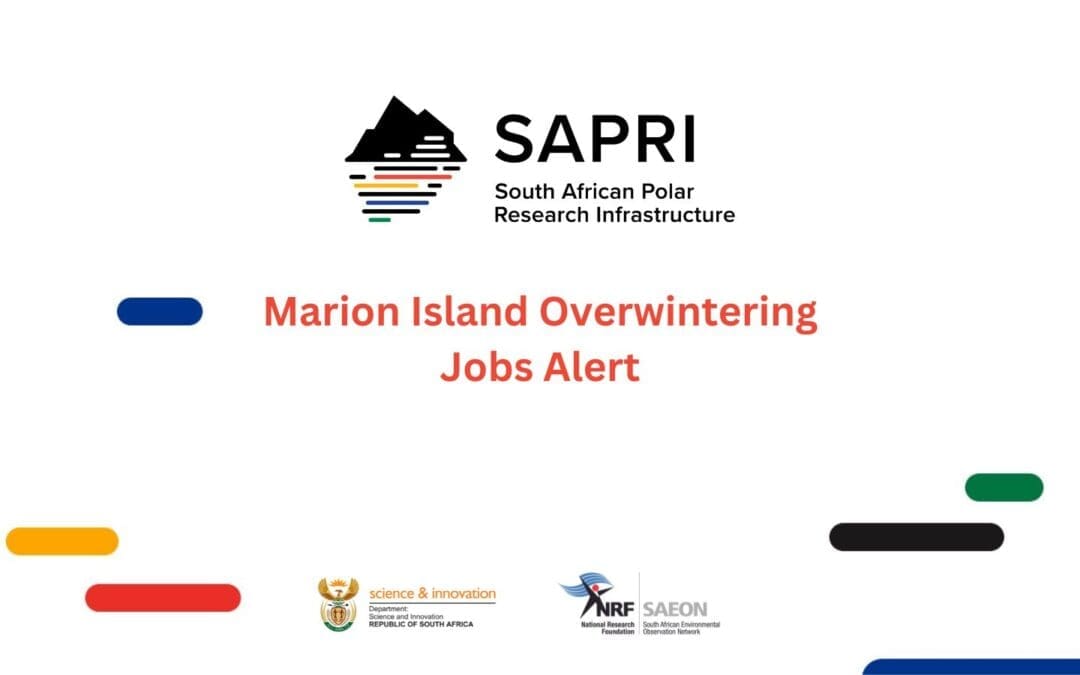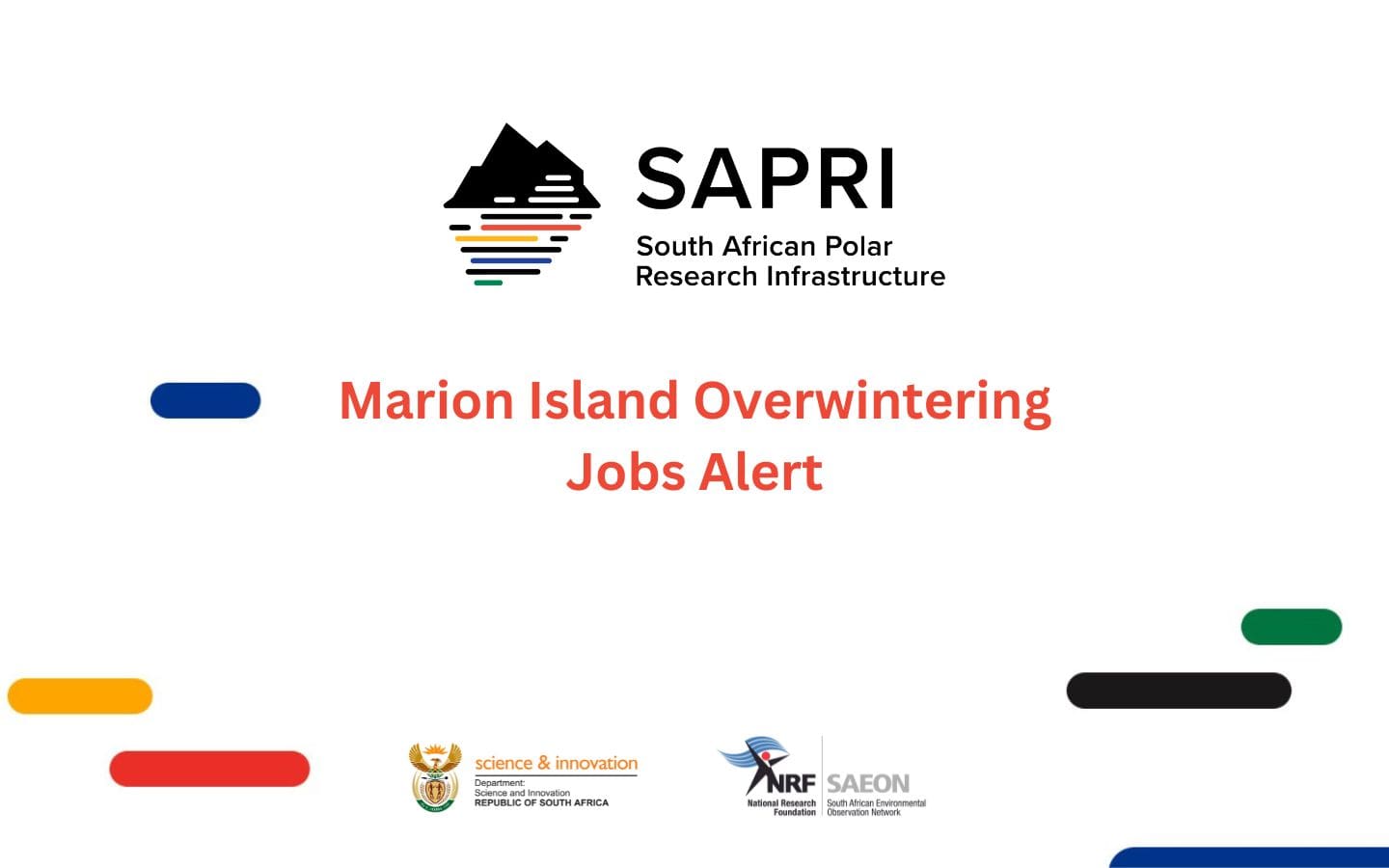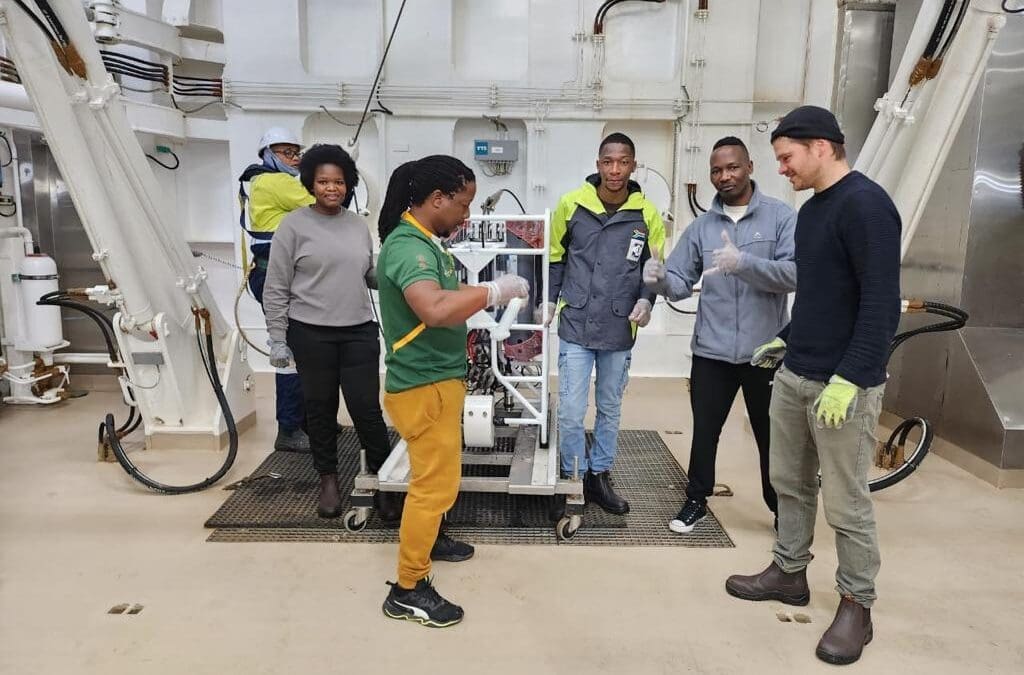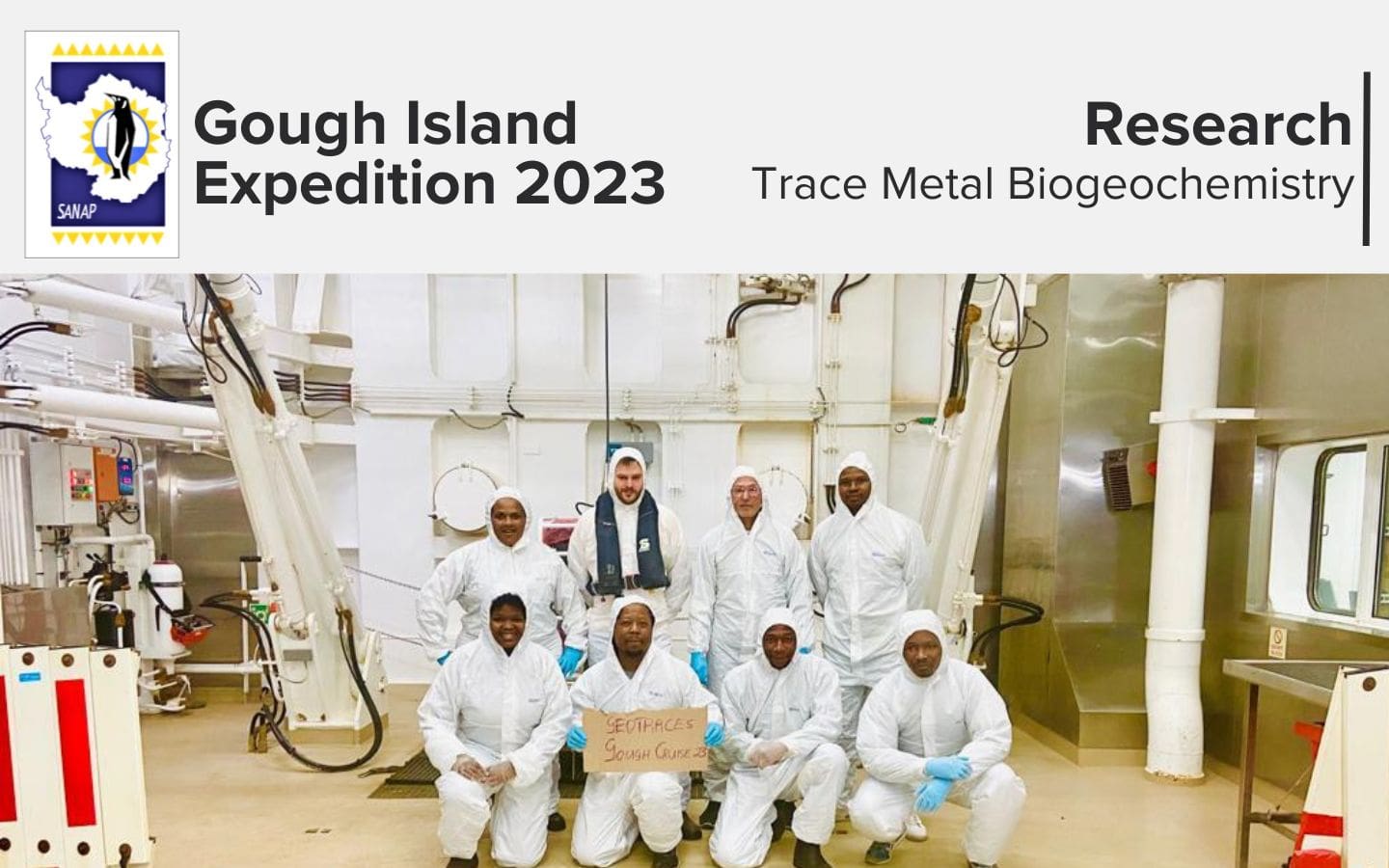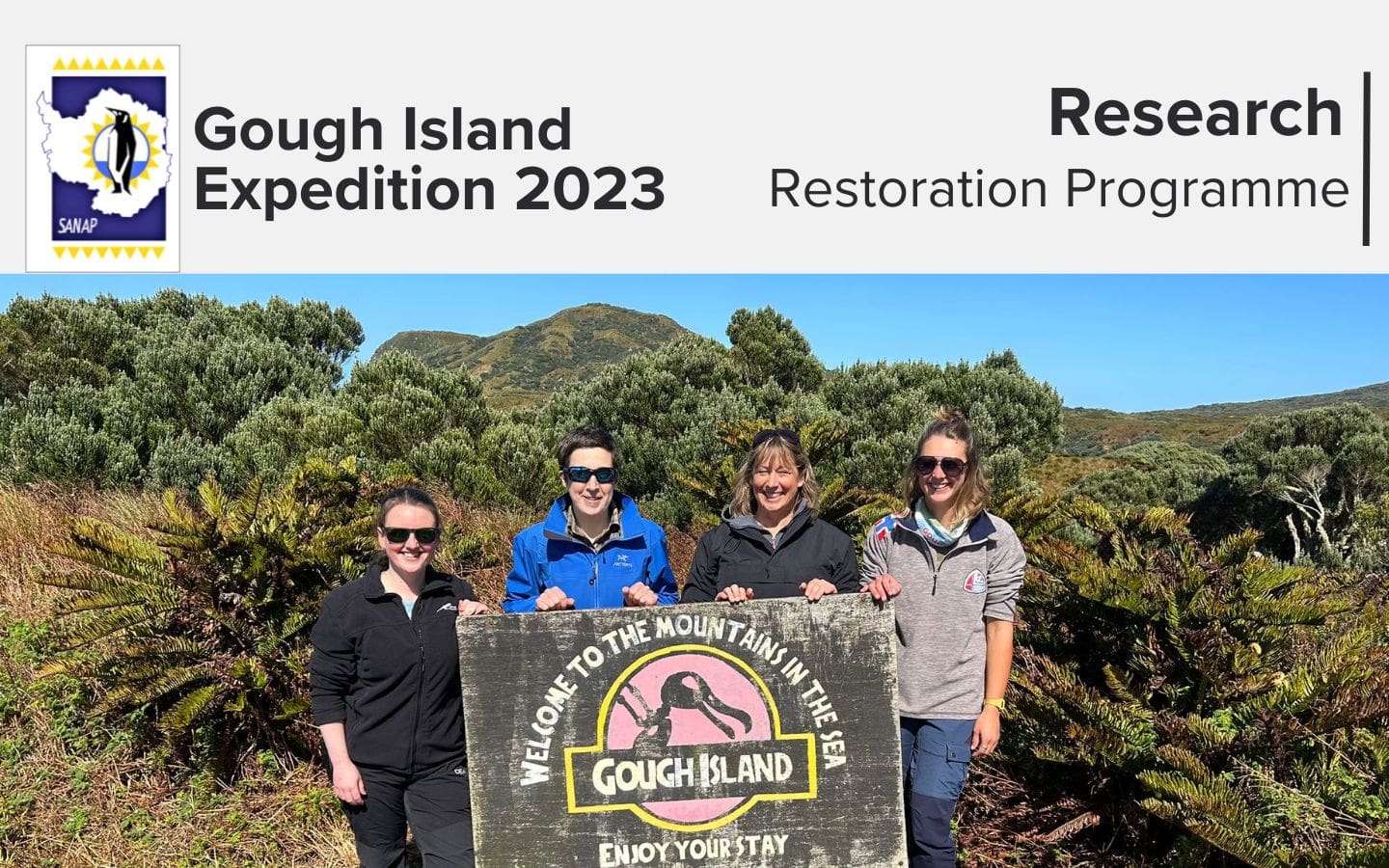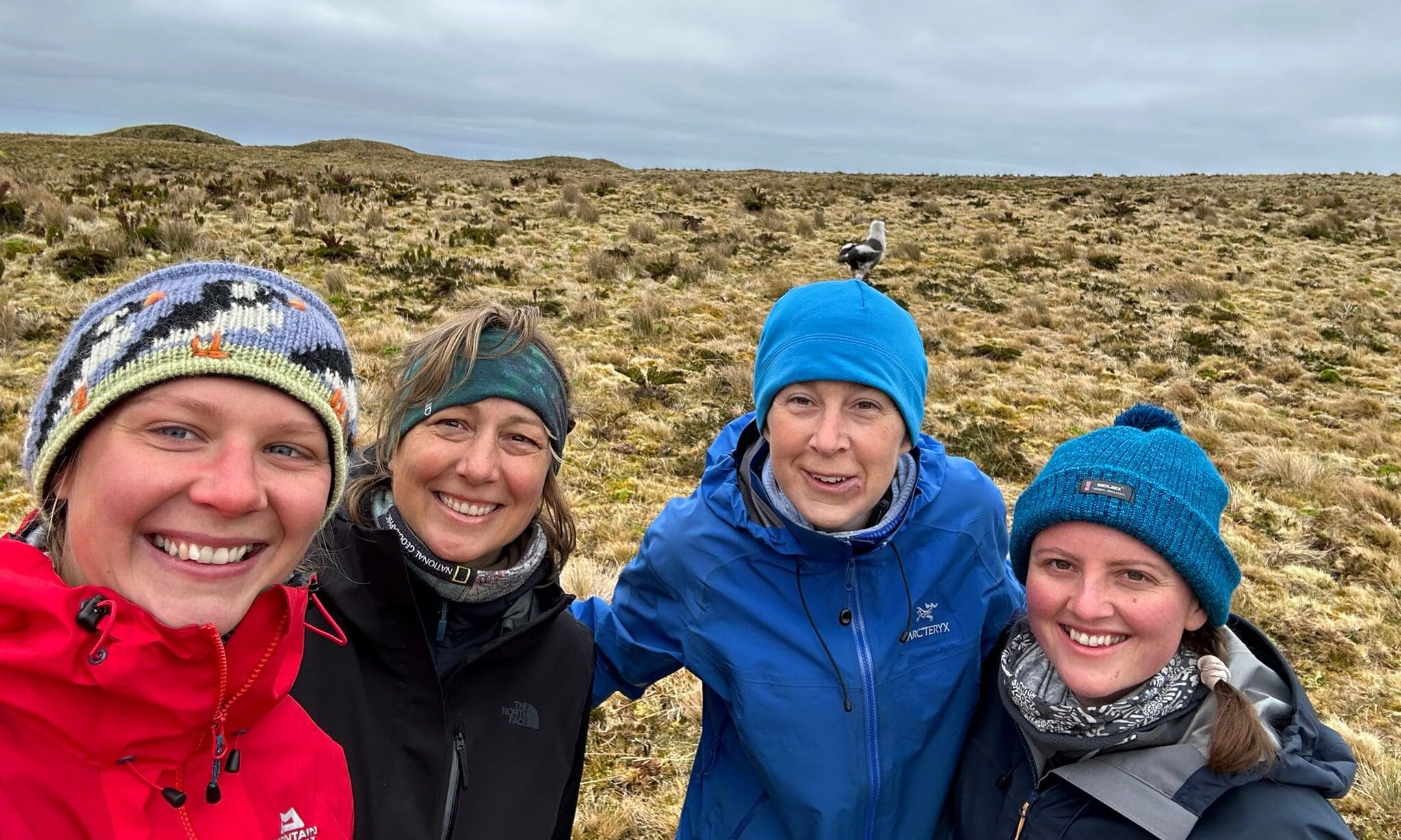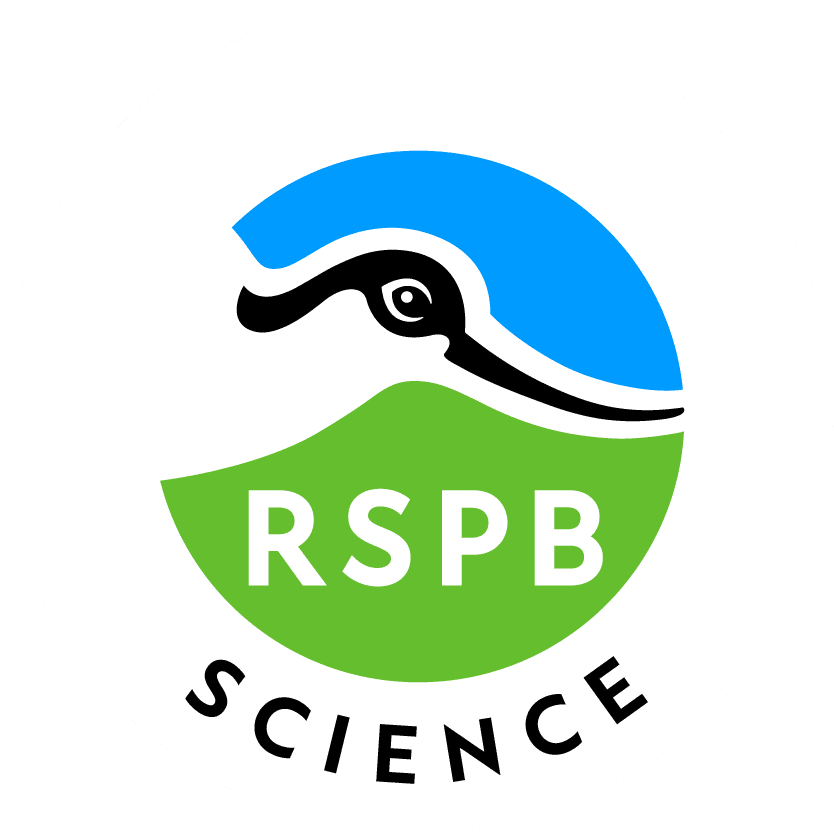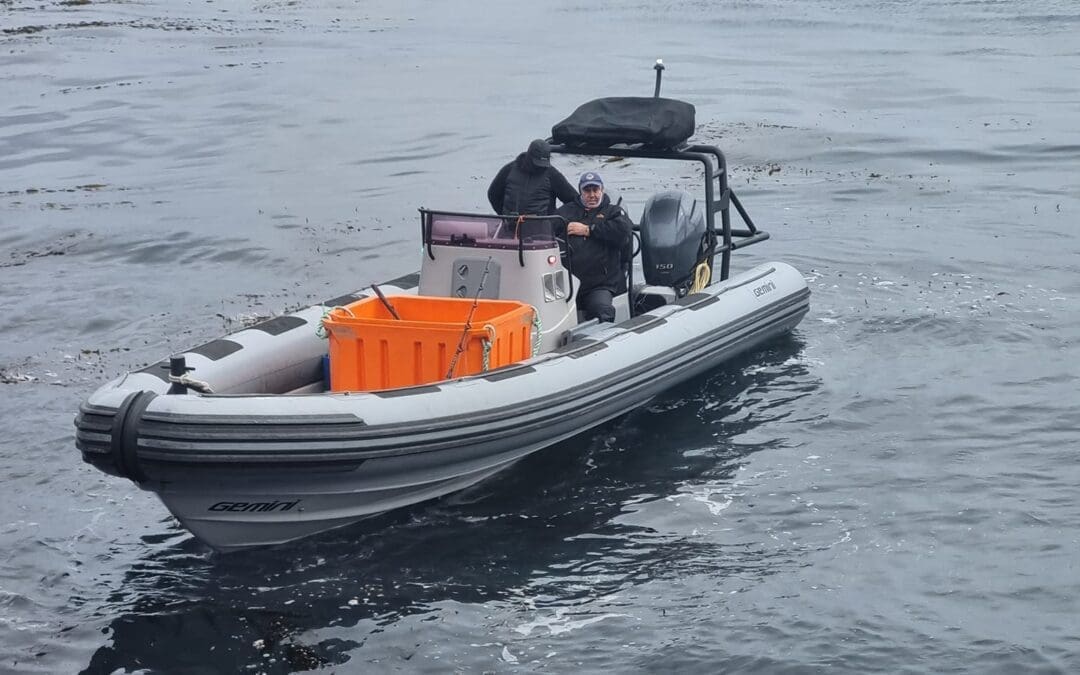
by Ria Olivier | Nov 30, 2023 | Announcement, Legacy, Obituary, Oceanography, Research, SA Polar Research Infrastructure, SAPolarRI, SAPRI, SEAmester, Southern Ocean, Women in Science
It is with great sadness that we announce the untimely passing of Dr Precious Thembumuzi Mahlalela.
Dr Mahlalela, Research Coordinator of the South African Polar Research Infrastructure (SAPRI) LTO-Ocean Integrated Facility, passed away on 28 November 2023 after a short battle with cancer.

Dr Mahlalela joined NRF-SAEON (host of SAPRI) in May 2023 at the same time as successfully finishing off the corrections for her PhD in Ocean and Atmospheric Sciences thesis, entitled Variability and Trends in Rainy Season Characteristics of the Eastern Cape. She was due to graduate in December.
Upon joining the SAPRI team, she threw herself straight into the adventure, assisting with SEAmester and providing great support at sea. As soon as she was back on dry land she flew to China to learn about moorings. Although this was her first international trip, she approached it like the other challenges she has faced, with a calm and humble attitude, open to learning and new experiences. Upon her return, she insisted on accompanying the SEAON team on a science engagement roadshow in the Western Cape to inspire young minds. She continued to work with the same positive energy and gentle sense of humour that endeared her to everyone.
“In the short time she was with us at SAPRI she became part of our family. Taken from us far too soon, her light will continue to shine through the friendships she made, the individuals she worked with, and the souls she ignited with inspiration. Fair winds and following seas, shipmate. We have the watch now” Prof Juliet Hermes – SAPRI and SAEON Egagasini Manager.
Dear Precious
Your warmth and gentle spirit shone so brightly that any room you walked into lit up with a soft glow. You were an angel on this earth who combined both a bubbly and calming presence and we will miss you more than any words can convey. We were so honoured to have worked with you.
Go gently dearest Precious. With love, from the SAPRI team.

The SAPRI team and SAEON Egagasini team will miss you dearly.

Our deepest condolences to Precious’s family, friends and everyone who had the privilege of meeting her.
Obituary of Precious Mahlalela by Juliet Hermes, Tammy Morris, Anne Treasure, Errol Julies, Anche Louw, Abu Nguna, Rabia Mathakutha and Riesna R. Audh, 30 November 2023.

by Ria Olivier | Nov 27, 2023 | Announcement, Jobs, Marion Island, News, Overwintering Team, Prince Edward Islands, Research, SA Polar Research Infrastructure, SANAP, SAPolarRI, SAPRI, Science, Southern Ocean, Stations, sub-Antarctic
 Applications open for:
Applications open for:
- Overwintering Birder
- Overwintering Killer Whaler
- Overwintering Sealer (2x positions)
The National Research Foundation (NRF) supports and promotes research and human capital development through funding, the provision of National Research Facilities and science outreach platforms and programmes to the broader community in all fields of science and technology, including natural sciences, engineering, social sciences and humanities.
The South African Environmental Observation Network (SAEON) is a research platform funded by the Department of Science and Innovation (DSI) and managed by the National Research Foundation (NRF) since 2002. SAEON is mandated to observe and research ecosystems on land, in coastal regions and the oceans to understand how those systems function and might change over time and space when influenced by socio-economic driving forces including climate change. We deliver our data online and offer tools, services and advice for informed environmental policy-making.
SAEON Egagasini Node, based in Cape Town, Western Cape, requires the services of suitably qualified individuals to be responsible for collecting field data on birds and mammals, to be used for conservation and academic purposes as part of the South African Polar Research Infrastructure (SAPRI). The birder will be contributing to the project ‘On-island impacts of climate change on the Southern Ocean’s iconic seabirds’ run by the FitzPatrick Institute (University of Cape Town).
The Marion Island research station is managed and administered by the Department of Forestry, Fisheries and the Environment (DFFE).
Apply before: 07 December 2023
Click here!
Anche Louw, South African Polar Research Infrastructure, 27 November 2023

by Ria Olivier | Nov 9, 2023 | Gough Island, Meteorology, Overwintering Team, Research, South Atlantic
More about the South African Weather Service team on the recent Gough Island takeover expedition.

L-R: James Joubert Burns, Velelo Mazele, Samkelisiwe Thwala, Khuliso Collen Maphaha, Fulufhelo Brenda Khobo and Kelcey Maewashe.
The South African Weather Service (SAWS) has been part of the South African National Antarctic Programme (SANAP) from the beginning, when the first team was appointed to stay on Gough Island. The metkassies (meteorological overwintering team members) continue to contribute to a long history of data collection on Gough Island. This includes an automatic weather station that measures temperature, wind speed and direction, humidity, and pressure.
What can the new overwintering team on the island look forward to?
The metkassies when on shift do visual observations which includes cloud height and type, horizontal visibility, precipitation type, weather present and past and sea temperature. Formal observation is done every hour from 06:00GMT until 15:00GMT and then every 3 hours during night shift. This is done every day of the week.
| TEAM | South African Weather Service (SAWS) |
| Project Name | Atmospheric and Ocean interaction studies |
| Principal Investigator | Dr. Jonas Mphepya |
Takeover Team Leader
| Samkelisiwe Thwala |
| Takeover Technical Support Member | Velelo Mazele |
| Senior Meteorological Technician (Gough68) | Khuliso Collen Maphaha |
| Assistant Meteorological Technician (Gough68) | Mphumzi Brooklyn Zilindile |
| Assistant Meteorological Technician (Gough68) | Tshililo Kharivha |
| Senior Meteorological Technician (Gough69) | Kelcey Maewashe |
| Assistant Meteorological Technician (Gough69) | James Joubert Burns |
| Assistant Meteorological Technician (Gough69) | Fulufhelo Brenda Khobo |
Check out the SAWS Marine Portal
Follow SAWS on Facebook | Follow SAWS on X | Follow SAWS on Instagram
Project information supplied by SAWS. Images supplied by Mbulaheni Kelcey Maewashe and James Burns (G69 team members).
Anche Louw, South African Polar Research Infrastructure, 09 November 2023.

by Ria Olivier | Oct 30, 2023 | Environment, geochemistry, Gough Island, News, Oceanography, Research, SA Agulhas II, SA Polar Research Infrastructure, SANAP, SAPolarRI, SAPRI, Science, South Atlantic, Southern Ocean, sub-Antarctic, Tristan da Cunha
Research team on the recent Gough Island takeover expedition.

Phytoplankton are microscopic plants that live in the ocean, and just like plants on land they need to have enough food to grow and be happy. However, some places in the ocean don’t have enough food for them whereas some places do. The Southern Ocean Carbon & Climate Observatory (SOCCO) team based at CSIR, Trace Metals team based at Stellenbosch University (TracEx) and the Department of Forestry, Fisheries and the Environment: Oceans and Coasts team are trying to figure out where those places are (in the Southern Ocean).
During the Gough Island takeover expedition:
The Trace Metal Biogeochemistry research teams sampled upstream and downstream of Gough Island to look at how the Antarctic Circumpolar Current (ACC) interacts with the island to resuspend sediments from the seafloor. This resuspended sediments acts as a source of trace metals to the surface mixed layer in support of phytoplankton blooms. The team used a 12 bottle mini-CTD rosette system (see image below, right) to sample for dissolved trace metals, particulate trace metals and organic trace metal chemistry.
| TEAM | Trace Metal Biogeochemistry |
| Projects Name | Seasonal Iron speciation in the Southern Ocean, from open ocean environments to naturally fertilized sub-Antarctic Islands (Marion and Gough Island) |
| Principal Investigator | Dr Thomas Ryan-Keogh | Senior Researcher at the Southern Ocean Carbon-Climate Observatory (SOCCO), CSIR South Africa |
| Co-Principal Investigator (On board DFFE team leader) | Dr TN Mtshali | Department of Forestry, Fisheries and the Environment (DFFE) |
| Co-Principal Investigator | Prof AN Roychoudhury | Stellenbosch University (TracEx) |
| SOCCO/TracEx on board team leader | Olie Valk | TracEx |
On board team member (PhD Student)
| Thapelo Ramalepe | SOCCO-TracEx |
On board team member (MSc Student)
| Miranda Sitofile | SOCCO-TracEx |
| On board DFFE team member | Mutshutshu Tsanwani | DFFE |
| On board DFFE team member | Kanyisile Vena | DFFE |
| On board DFFE team member | Hassan Ismael | DFFE |
| On board DFFE team member | Mbulelo Makhetha | DFFE |
| On board team members | Including all ship-based scientists sampling for trace metals |
The project in more detail:
The Southern Ocean (SO) is one of the largest high-nutrient low-chlorophyll regions in the World’s Ocean, where primary productivity is limited by iron bioavailability, thereby impacting the strength and efficiency of biological carbon pump. There are, however, exceptions with large phytoplankton blooms persistently observed downstream of the sub-Antarctic Islands. While extensive research has focussed on iron-biogeochemistry around Kerguelen and Crozet islands, no such studies have been conducted at Marion and Gough islands.
Furthermore, whilst our previous studies have made substantial advances toward addressing the gaps in seasonal data coverage through the Southern oCean seAsonaL Experiment (SCALE) 2019 winter and spring expeditions, there is still a paucity of dissolved iron data in the SO, especially from autumn to late spring. This is severely hampering our understanding of the full seasonal biogeochemical iron cycle and its impact on primary production. This project aims to continue its focus on seasonality by expanding seasonal coverage of iron measurements to include autumn (Marion) and late-spring (Gough) expeditions for more comprehensive coverage of the SO seasonal cycle, with a particular focus on quantifying biogeochemical cycling of iron-pool around these understudied islands.
This project is funded by: The National Research Foundation, South African National Antarctic Programme funding (NRF-SANAP).
Current NRF-SANAP funded projects
Visit SOCCO here! Visit TracEx here!
Featured Image: L-R (Back): Kanyisile Vena (DFFE), Ole Valk (TracEx), Hassan Ismael (DFFE), Mbulelo Makhetha (DFFE); (front) Miranda Sitofile (SOCCO-TracEx), Thato Mtshali (DFFE), Thapelo Ramalepe (SOCCO- TracEx), Mutshutshu Tsanwani (DFFE).
Project information supplied by Dr Thomas Ryan-Keogh. Images supplied by Thapelo Ramalepe.
Anche Louw, South African Polar Research Infrastructure, 30 October 2023.

by Ria Olivier | Oct 12, 2023 | Environment, Gough Island, Invasion Biology, Mice Eradication, News, Overwintering Team, Research, Science, Take-Over Operations
The Gough Island Restoration Programme

Situated in the South Atlantic Ocean, positioned equidistantly between South Africa and South America, lies a highly significant breeding ground for seabirds known as Gough Island. This remote island serves as the breeding habitat for 24 distinct avian species, many of which are found nowhere else on the planet. Regrettably, the avian inhabitants now share their home with an invasive species, specifically the house mouse. These non-native mice, introduced to the island by human activity, are causing severe harm to the island’s native wildlife, including plants and animals that have thrived there for millennia. The mice’s voracious appetite leads to the consumption of over two million seabird eggs and chicks annually, driving certain species perilously close to extinction.
In an effort to safeguard the birds, the Gough Island Restoration Programme was launched with the aim of eradicating the mice. In 2021, the Gough Island Restoration Programme attempted to eradicate mice from the island in one of the most challenging and logistically complex island eradications ever ventured.
Although the endeavor did not achieve complete success, it significantly reduced the mouse population, providing a respite for the birds. During this period, the avian inhabitants managed to successfully raise numerous chicks.
Scientists continue to monitor the birds and gather valuable information that will hopefully aid in future endeavors to eliminate the mice entirely. Part of this takeover and the overwintering field team’s work programme will relate to follow-up activities to further underpin efforts to restore Gough Island.
| Team | The Royal Society for the Protection of Birds (RSPB) |
| Project Name | The Gough Island Restoration Programme |
| Principal Investigator | Dr Antje Steinfurth |
Field Team Leader
(Gough68 & Gough69) | Dr Lucy Dorman |
| Field Officer (Gough68) | Ms Rebekah Goodwill |
| Field Officer (Gough69) | Ms Hannah Greetham |
More about the work on the island for this takeover:
“During takeover our team is carrying out a census of Tristan Albatrosses and Southern Giant Petrels across the whole island, the so-called round island survey. At this time of year, the Southern Giant Petrels are starting to breed while the Tristan Albatross chicks are about to fledge. The number of fledged Albatross chicks will then be compared to numbers of breeding pairs that were counted at the beginning of the year and so breeding success for this Critically Endangered bird can be calculated (more than 99% of the global population breed exclusively on Gough Island). The round island survey also provides the team with the opportunity to monitor the abundance and distribution of the two landbird species, the Gough Bunting and the Gough moorhen.
This takeover the team will also be taking some soil samples from the upland parts of the island. This is to help monitor the ecosystem in the wake of the mouse eradication attempt”.

The RSPB Gough Island Restoration Programme takeover team (L-R): Hannah Greetham, Antje Steinfurth, Lucy Dorman and Rebekah Goodwill.
The RSPB overwintering team members’ work:
They will focus on Gough’s bird life, monitoring the breeding success of species, providing estimates of their populations and survival and documenting the impacts of House Mice.
For more information visit about The Gough Island Restoration Programme, click on the link below.
The Gough Island Restoration Programme This project is funded by: The Royal Society for the Protection of Birds (RSPB).
This project is funded by: The Royal Society for the Protection of Birds (RSPB).
Project information and images supplied by Dr Antje Steinfurth.
Anche Louw, South African Polar Research Infrastructure, 12 October 2023.

by Ria Olivier | Oct 3, 2023 | Current Event, Discover, Gough Island, Mammology, News, Research, SA Agulhas II, SA Polar Research Infrastructure, SANAP, SAPolarRI, SAPRI, Science, sub-Antarctic, Tristan da Cunha
Featuring research teams currently on the Gough Island takeover expedition.

The Tristan da Cunha Conservation Department recruited two Tristan Islanders to assist in the field at Tristan for the duration of the takeover. Image of the two members of a previous team.
During the annual Gough Island takeover (relief) expedition, the S.A. Agulhas II delivers passengers and cargo to Tristan da Cunha Island, which is 350 kilometers from Gough Island. Additionally, several researchers are given the chance to carry out their research at Tristan da Cunha during the relief period for Gough Island.
Prof Marthán Bester, semi-retired, Emeritus Professor and senior Research Fellow of the Mammal Research Institute at the University of Pretoria, is currently on the Tristan da Cunha to conduct field research on Subantarctic fur seals.
Find our more below about this project and prospects for the takeover period.
| TEAM | Tristan Mammal Research |
| Project Name | Subantarctic Fur Seals at the Tristan da Cunha Islands, South Atlantic Ocean |
| Principal Investigator | Prof Marthán Bester | University of Pretoria |
| Co-Principal Investigator | Prof Nico de Bruyn | University of Pretoria |
| Co-Principal Investigator | Dr Mia Wege | University of Pretoria |
| Co-Principal Investigator | Mr. Trevor Glass | Tristan Conservation Department Head |
The history of fur seal research on Tristan da Cunha
Fur seal research at the Tristan da Cunha (TdC) Islands started during the 1970s (1974–1978). In its present form, the research continues through a next phase (2009–2019), and beyond.
Short description of the project
Using Subantarctic fur seals as bioindicators of environmental conditions and as tools for suitable management of natural resources, contributing to observing marine ecosystems in the TdC Islands, since 2019 and beyond, the aim is to: (a) determine the seasonal attendance patterns of primarily lactating adult females, from the smallest (incipient) population of the species in the world at Cave Point Peninsula, TdC, (b) measure and contrast the growth rate and/or weaning mass of pups at the Cave Point breeding colony (10 month nursing period), (c) collect scat (non-invasive) and whiskers (invasive) samples for diet analyses.
During this ‘takeover’ the team aims to service and/or retrieve the Attendance Pattern Automated System (satellite-linked) at Cave Point, collect and process fur seal scat samples to determine diet, and weigh pup/under-yearling fur seals (at around 290 days of age) to compare their weaning weights amongst years and with those of pups from other island populations (including Gough Island).
In everyday language
The fur seals breed and rest on the islands, and they feed at sea. The research team aims to determine (1) what the seals feed on when they are away during feeding trips, (2) how well the pups, which remain on land, grow on a diet of milk which they suck from their mothers when these return to land after each feeding trip, and (3) how far away from the island, and for how long, do the mothers of the fur seal pups have to remain at sea on each feeding trip to be able to sustain their pups until weaning.
For more information visit about Subantarctic fur seals, click on the link below.
Marion Island Marine Mammal Programme

This project is funded by: The National Research Foundation (NRF-SANAP), The Royal Society for the Protection of Birds (RSPB) and Tristan da Cunha Conservation Department (TdC Conservation Department).
Update posted by the Tristan Conservation Department (on Facebook, 09 October 2023):
“The weather has been very nice last week. The conservation team and professor Martian Bester managed to go to the caves to do seal work with the seal pups. It was a great success as they managed to weigh fifty pups. Martian has been working with the conservation department for fourty nine years but sadly this is his last year working with the conservation team as he is retiring”
Project information and feature image supplied by Prof Marthán Bester.
Anche Louw, South African Polar Research Infrastructure, 03 October 2023, updated on 10 October 2023.
